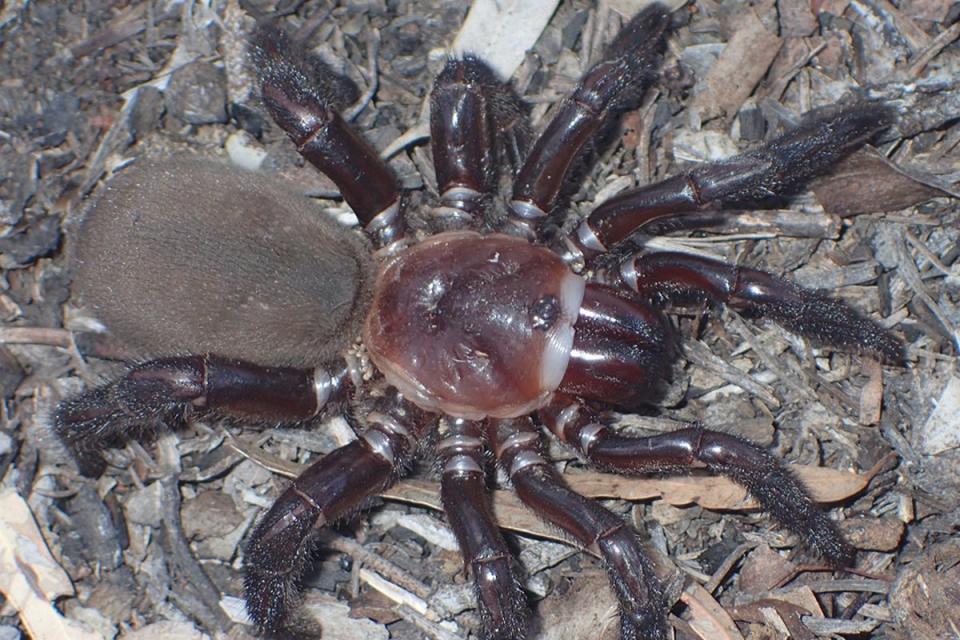Australian scientists discover ‘big, beautiful’ new trapdoor spider species

Australian scientists have discovered a new rare and giant “golden” trapdoor spider species that is only found in Queensland.
Its Latin name, Euoplos dignitas, translates to “dignity” or “greatness” in reference to its large size, with some measuring almost five centimetres long.
Dr Michael Rix, Principal Curator Arachnology at Queensland Museum Network, said the name reflects the “really spectacular nature of this spider”.
He described it as a “big, beautiful species”.
The trapdoor spider is only found in the Brigalow Belt, a wide band of grassland, in central Queensland.
It lives in open woodland habitats and builds its burrows in the black soils of the region.
The species is known to only live in a few locations, and has lost much of its habitat to land clearing, which makes it likely to be an endangered species.
The males have a “honey-red” colour while the larger females are darker and stockier because they spend their entire lives underground.

The females measure almost two inches in body length, Mr Rix said.
“They’ve got these really cryptic trapdoors in these woodland habitats on the ground and most people wouldn’t even realise that they’re there,” he added.
The spiders spend their first five to seven years in “plug-like” burrows, under the males emerge to find female burrows.
Scientists assured that the spiders pose no serious threat to humans.
No Australian trapdoor spiders in the same group as the new species are known to be dangerously venomous, even though they have venom apparatus in the fangs.
The woodlands of the Brigalow Belt used to cover large areas of eastern Queensland, but have been decimated by over 150 years of human development.
The woodlands are now home to some of Queensland’s most threatened species but they have received relatively little scientific attention, Queensland Museum said.
The Euoplos dignitas spider was discovered as part of a project targeting fieldwork across the Brigalow Belt bioregion to document new species, understand the ecology and conservation status of endemic species, and examine the impacts of past climate change.

 Yahoo Sport
Yahoo Sport 





































